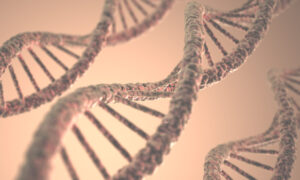Did you know the QwikCheck 1 Step Vitality Stain can also be used with Manual Microscopic methods.
Here is our recommended procedure when using traditional microscopic methods for semen analysis.
Semen Analysis Vitality Testing Procedure
VITALITY TESTING PROCEDURE : eosin alone
WHO laboratory manual for the Examination and processing of human semen ‐ FIFTH EDITION
2.6.2 Vitality test using eosin alone (WHO 5th Edition Manual pages 29 and 30)
This method is simple and rapid, but the wet preparations cannot be stored for quality control purposes.
2.6.2.1 Preparing the reagents
- NaCl, 0.9% (w/v): dissolve 0.9 g of NaCl in 100 ml purified water.
- Eosin Y, 0.5% (w/v): dissolve 0.5 g of eosin Y (colour index 45380) in 100 ml of 0.9% NaCl.
Note: Some commercially available eosin solutions are hypotonic aqueous solutions that will stress the spermatozoa and give false‐positive results (Björndahl et al., 2004). If using such a solution, add 0.9 g of NaCl to 100 ml of solution to raise the osmolality.
2.6.2.2 Manual Semen Analysis Procedure
- Mix the semen sample well (see Box 2.3).
- Remove an aliquot of 5 ul of semen and combine with 5 ul of eosin solution on a microscope slide. Mix with a pipette tip, swirling the sample on the slide.
- Cover with a 22 mm × 22 mm coverslip and leave for 30 seconds.
- Remix the semen sample, remove a replicate aliquot, mix with eosin and treat as in steps 2 and 3 above.
- Examine each slide, preferably with negative‐phase‐contrast optics (positivephase‐contrast makes faint pink heads difficult to discern) at ×200 or ×400 magnification.
- Tally the number of stained (dead) and unstained (vital) cells with the aid of a laboratory counter.
- Evaluate 200 spermatozoa in each replicate, in order to achieve an acceptably low sampling error (see WHO Manual Box 2.5).
- Calculate the average and difference of the two percentages of vital cells from the replicate preparations.
- Determine the acceptability of the difference from WHO Manual Table 2.1 or Fig. A7.2, Appendix 7. (Each shows the maximum difference between two percentages that is expected to occur in 95% of samples because of sampling error alone.)
- If the difference between the percentages is acceptable, report the average percentage vitality. If the difference is too high, make two new preparations from two new aliquots of semen and repeat the assessment (see WHO Manual Box 2.6).
- Report the average percentage of vital spermatozoa to the nearest whole number.
2.6.2.3 Scoring The Semen Sample
- Live spermatozoa have white or light pink heads and dead spermatozoa have heads that are stained red or dark pink.
- If the stain is limited to only a part of the neck region, and the rest of the head area is unstained, this is considered a “leaky neck membrane”, not a sign of cell death and total membrane disintegration. These cells should be assessed as alive.
- If it is difficult to discern the pale pink stained head, use nigrosin to increase the contrast of the background (see WHO Manual Section 2.6.1).
2.6.2.4 Lower reference limit
The lower reference limit for vitality (membrane‐intact spermatozoa) is 58% (5th centile, 95% CI 55–63).
Comment: The total number of membrane‐intact spermatozoa in the ejaculate is of biological significance. This is obtained by multiplying the total number of spermatozoa in the ejaculate (see WHO Manual Section 2.8.7) by the percentage of membrane‐intact cells.




